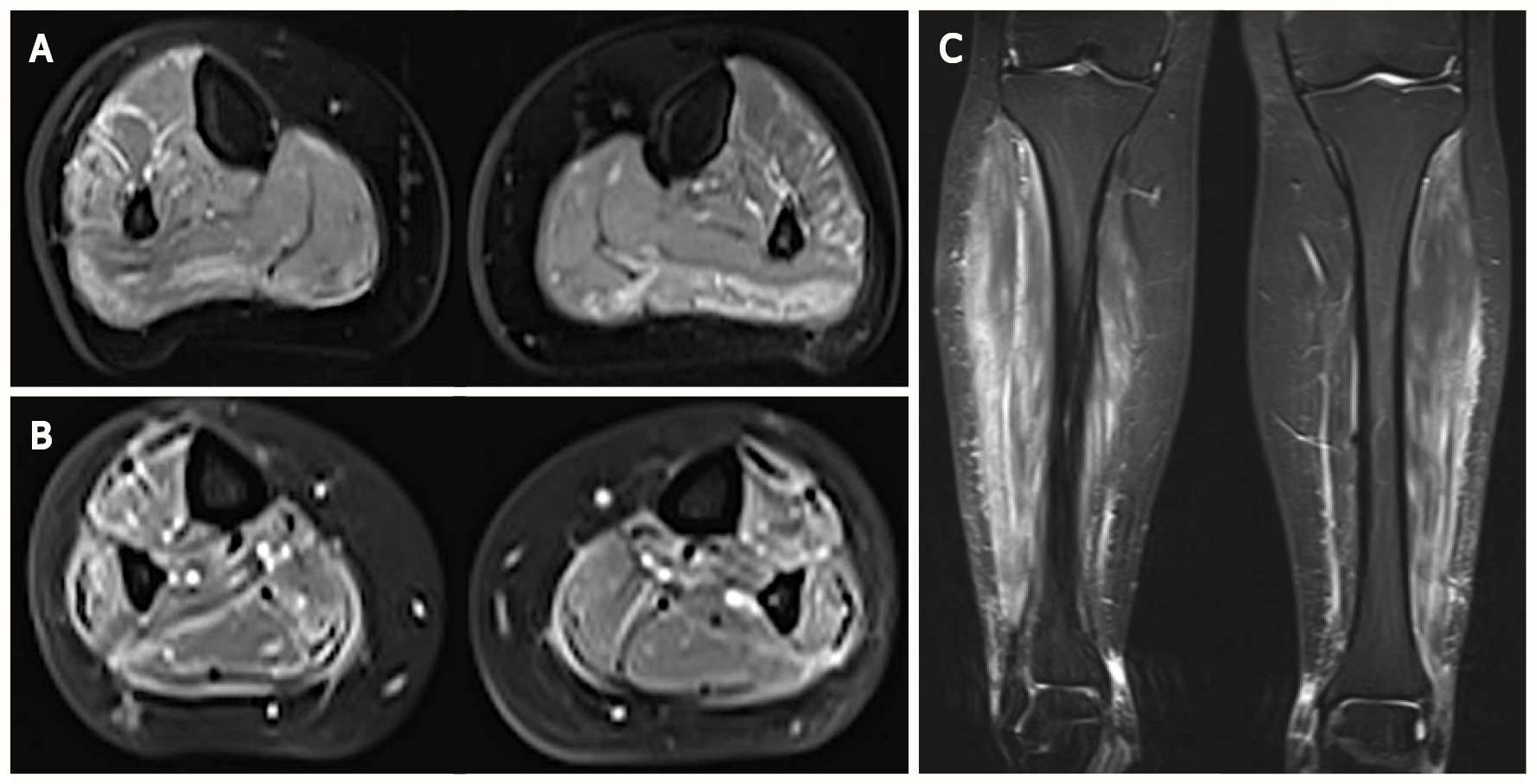Copyright
©The Author(s) 2022.
World J Gastroenterol. Feb 21, 2022; 28(7): 755-762
Published online Feb 21, 2022. doi: 10.3748/wjg.v28.i7.755
Published online Feb 21, 2022. doi: 10.3748/wjg.v28.i7.755
Figure 1 Magnetic resonance imaging of the calves in axial and frontal views.
A and C: Demonstration of high signal on T2-weighted images in muscles from posterior and lateral compartments of the legs as well as in their surrounding fascia; B: This finding was accentuated on gadolinium-enhanced fat-suppressed T1-weighted images, suggestive of myositis and fasciitis.
Figure 2 Biopsy specimen from the right gastrocnemius muscle showing the intense immune-inflammatory reaction.
A: This hematoxylin and eosin-stained section shows the granulomatous nature (arrowhead) of this Crohn’s disease-associated skeletal myositis, predominating in the perimysial compartment; B: Discrete and focal immune infiltrates are found in the endomysium and around vascular structures (arrows); C and D: Immunohistochemical staining characterize immune cell-types involved therein: Co-staining for CD3 (brown staining) and CD20 lymphocytes (red staining) shown in C reveals predominance of CD3+ lymphocytes over CD20+ cells. CD4 and CD8 T cells subtyping shown in D (brown and red staining respectively) further reveals a slight predominance of CD8+ over CD4+ cells.
- Citation: Catherine J, Kadhim H, Lambot F, Liefferinckx C, Meurant V, Otero Sanchez L. Crohn’s disease-related ‘gastrocnemius myalgia syndrome’ successfully treated with infliximab: A case report. World J Gastroenterol 2022; 28(7): 755-762
- URL: https://www.wjgnet.com/1007-9327/full/v28/i7/755.htm
- DOI: https://dx.doi.org/10.3748/wjg.v28.i7.755










